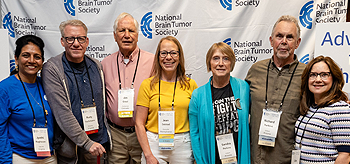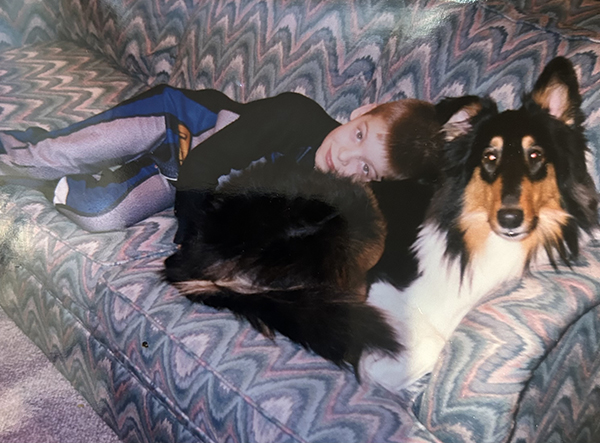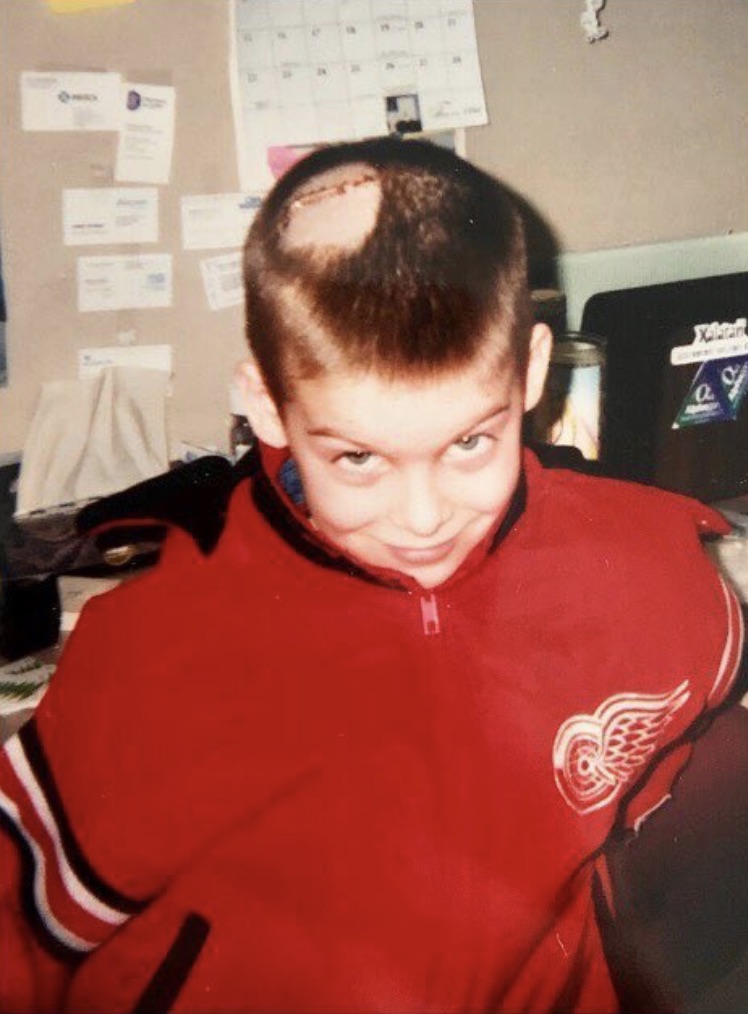When Ryan Neal was just five years old, his family dog — a tricolor Collie named Casey — pawed at him while he was having a seizure and then rushed upstairs to get the attention of his mom, Geri, who came downstairs to help him. This seizure was the first of many that ultimately led to his brain tumor diagnosis.
“It all stemmed from my one-year-old dog finding me and potentially saving my life,” Ryan said.
As Ryan continued to have seizures, his parents met with doctors to try to determine the root cause. Testing throughout his kindergarten school year ruled out epilepsy and other possible options.
“I remember almost all of my seizures to this day,” Ryan shared. “Being in school and falling down at recess with kids swarming around me, and me just looking up and not knowing what was going on. I always felt like the special kid of the group and looked at, like ‘Oh, that’s the guy that’s having problems.’”
“Your Son Has a Brain Tumor”
Eventually, Geri received a phone call from the neurology department during her 40th birthday party to learn her son, a first grader, had a dysembryoplastic neuroepithelial tumor (DNET) in his frontal/parietal junction.
Ryan and his parents met Alexa Canady, MD, the first Black female neurosurgeon in the United States, at the Children’s Hospital of Michigan, where they were given two surgical options.
“She gave my parents the option to do a full open-head surgery, which was standard at the time in 1998, and explained that there was a very good chance I would need to have a shunt,” Ryan explained. “With this option, my life would have been difficult, and there could be some potential complications down the road.”
Dr. Canady then offered a relatively new option, at the time, called stereotactic brain surgery.
“She told my parents that it was a riskier decision, but his potential outcome could be much greater if it’s successful,” Ryan said. “They decided to take a risk and do that. It turned out great, as I haven’t had a seizure since that day.”
Ryan would return to the hospital for follow-up MRIs, which two years later found a benign brain tumor on the pineal gland that remains there today.
“At an early age, the brain tumor really put a perspective on life for me,” Ryan said. “It’s always given me this very positive outlook on life, and I think that comes through in my music and the freedom not to be scared to express myself.”
A Passion for Music
Today, Ryan works as a singer, songwriter, and music producer in Nashville. While there was always music playing in his family’s home growing up, he recalls being inspired by his paternal grandmother, who played the piano professionally.
“She was in a nursing home with pretty severe dementia for the last 10 years of her life, but she was able to go down to her lobby with hundreds of people at brunch and dinner and entertain them,” Ryan shared. “She would play piano pieces from when she was six or seven. She could remember those pieces but not who we were. It was like this cool superpower to see this woman captivate an audience and play extremely well at 93 years old.”
Ryan attributes his career aspirations to his grandmother and the movie “School of Rock.”
“Around the age of 12, I saw the movie ‘School of Rock,’ and it changed everything for me,” Ryan explained. “I wanted to become an electric guitar player. Literally, that movie changed the direction of my life. Ever since then, sports started dwindling, and music started increasing.”
Inspiring Others
“I would love to give a sense of hope to kids and their parents who are going through it,” Ryan said. “I think it’s such a scary process, especially for the parents. I was so young that I didn’t even really know that it wasn’t a normal life going to the hospital all the time.”
Ryan’s parents made going to the hospital fun, from visiting the Wendy’s inside the hospital to wheelchair races to going through the tunnels.
“I look back on it as a very positive experience, oddly enough,” Ryan said. “I want to instill a sense of hope and that there’s light at the other side of the tunnel, and there’s a lot to be accomplished.”





